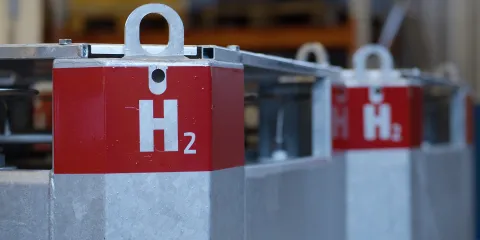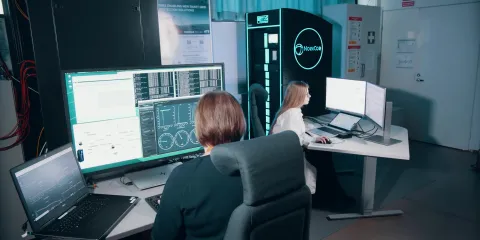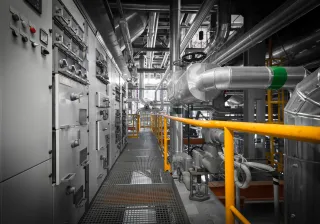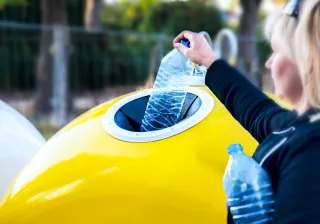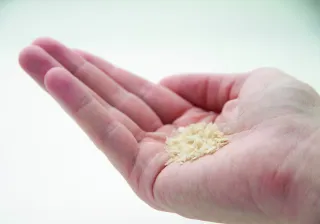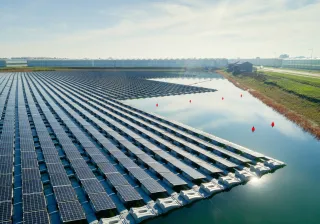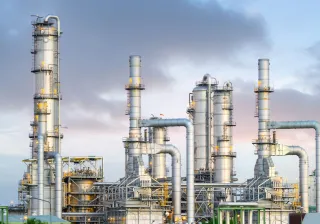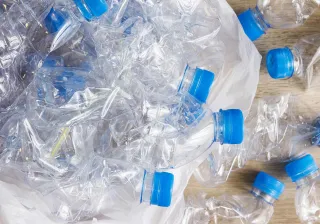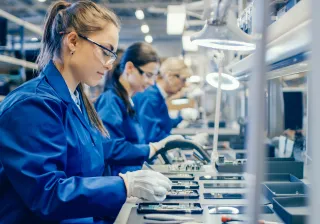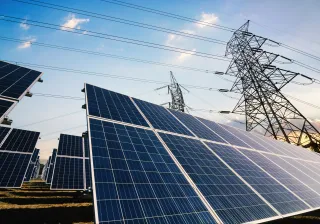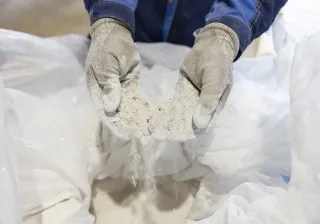Carbon capture and storage or utilization (CCS / CCU)

Carbon-dioxide removal has the potential to be a huge market – as well as a climate-saving enterprise. It offers a way to stop the rise of CO2 in the atmosphere – even possibly reverse it, while creating valuable products utilising CO2 as a raw material. VTT offers innovative carbon capture, utilisation and storage solutions for different industrial sectors.
Key facts: carbon capture, utilisation and storage
CCU and CCS are crucial technologies in climate change mitigation. We develop solutions to benefit sectors incl. industry, transport, agriculture, energy and more.
Chemicals, fuels and materials can be produced without fossil resources.
Bio-CCS is one of the key carbon negative technologies that can be deployed today in industrial scale.

“All transport fuels and most of the chemical products could be produced by using recycled CO2 and clean hydrogen.”
Currently, the global economy is too heavily based on fossil hydrocarbons, which can no longer be utilised at the current pace if we want to reach climate targets. Carbon capture and utilisation (CCU), and carbon capture and storage (CCS), combined with power-to-X and clean hydrogen technologies are the key technologies in reaching these targets, globally.
New products and business with carbon capture, utilisation and storage technologies
CCU offers novel solutions to utilise carbon dioxide as a raw material, which helps to replace fossil fuels and chemicals and even produce entirely new products like “food without fields”. CCS technologies on the other hand help create net negative greenhouse gas emissions.
CCS can also be combined with carbon neutral CO2 sources: Capturing and storing CO2 from bioenergy or biogenic exhaust gases or directly from the air leads to net negative greenhouse gas emissions from life cycle perspective. With carbon capture and storage, we can utilise fossil fuels during the transition to carbon neutral future processes.
DECARBONATE – creating revenue by electrification and CO2 utilisation
Global CO2 emissions from the two most emitting manufacturing industries, cement & lime and iron & steel production are vast even compared to the CO2 emissions of global aviation. CO2 emissions from manufacturing industries are difficult to avoid, because a major part of them is inherent to the raw material used. As part of the DECARBONATE project, VTT and its partners worked to enable industries to capture the CO2 with high-efficiency capture methods and utilise the CO2 as a product or further refine it into fuels and chemicals with the lowest carbon footprints.
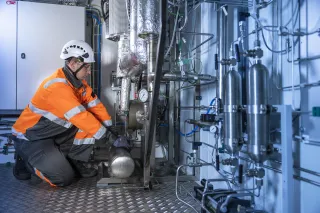
Innovative concepts to cut down emissions with CCU and CCS
We have modelled, evaluated, developed, and demonstrated new innovative CCU and CCS concepts for the most important sources of global CO2 emissions. We’ve created solutions for heavy industry, transport sector, electricity and heat production as well as for agriculture and forestry.
We help industries to reduce emissions and save resources by assessing, modelling and demonstrating new concepts, processes and technologies.
Read more about our work with CCU and CCS
-
Results of Carbon Capture and Storage Research Programme coordinated by VTT
-
Dissertation about significant CO2 emission reductions in blast furnace-based steel mills
-
Utilising biogenic carbon dioxide emissions and clean hydrogen to produce speciality chemicals in our BECCU project and Forest CUMP project with industry partners
- Dissertation about direct capture of CO2 from air
Our solutions for Industry
-
Electric kiln for cement and lime production enabling efficient CO2 capture
-
CO2 capture based on absorption in carbonate solutions
-
Concrete curing with CO2
-
Economically feasible on-site CCU for integrated pulp and paper mills
-
CCS in pulp mills resulting “negative emissions”
-
Oxygen blast furnace process and post combustion CCS for steel industries
-
Valuable products from process gases of steel industries with CCU
-
Feasibility studies for oil and gas industries, e.g. SMR
-
Chemicals and materials utilising CO2
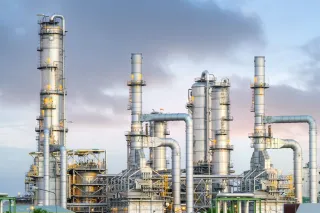

Our solutions for Transport
-
CCU for power-to-fuels (P2X) to produce carbon neutral transportation fuels
-
Fischer-Tropsch hydrocarbons (FT)
-
Synthetic natural gas (SNG)
-
Methanol (MeOH)
-
-
Large scale hydrogen production by SMR with CCS
Our solutions for Electricity and Heat
-
Utilisation, optimisation and economic feasibility of PEM and SOEC electrolysis for
-
produce hydrogen for CCU processes
-
balancing of power system
-
converting intermittent wind and solar power to storable carbon neutral fuels
-
-
CCS by oxy-combustion (including VTT’s pilot scale CFB combustion and gasification infra)
-
CCU and CCS in CHP systems
-
“Negative emissions” with bioenergy and CCS (bio-CCS, BECCS)
-
Power from waste heat utilising CO2 as a working fluid


Our solutions for Agriculture and Forestry
-
CO2 capture as endotoxin-free microbial protein for food and feed
-
Food grade CO2 by Direct Air Capture (DAC) and CO2 capture from ventilation
- Solutions to enhance carbon sinks in forestry and soils
P2X mobile demonstration platform for flexible piloting
Our mobile research environment can be used for a range of power-to-chemicals and power-to-fuel testing & demonstration campaigns. The pilot system consists of several mobile containers which can be operated independently or as an integrated platform.
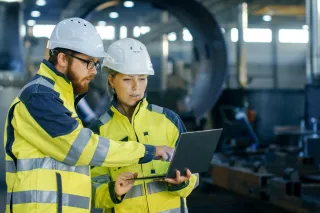
Plant for converting gases into fuels and chemical products

VTT - Circulating Fluidized Bed (CFB) Combustion Services

Contact us here!
See our publications
Read Antti Arasto's dissertation on Techno-economic evaluation of significant CO2 emission reductions in blast furnace-based steel mills
